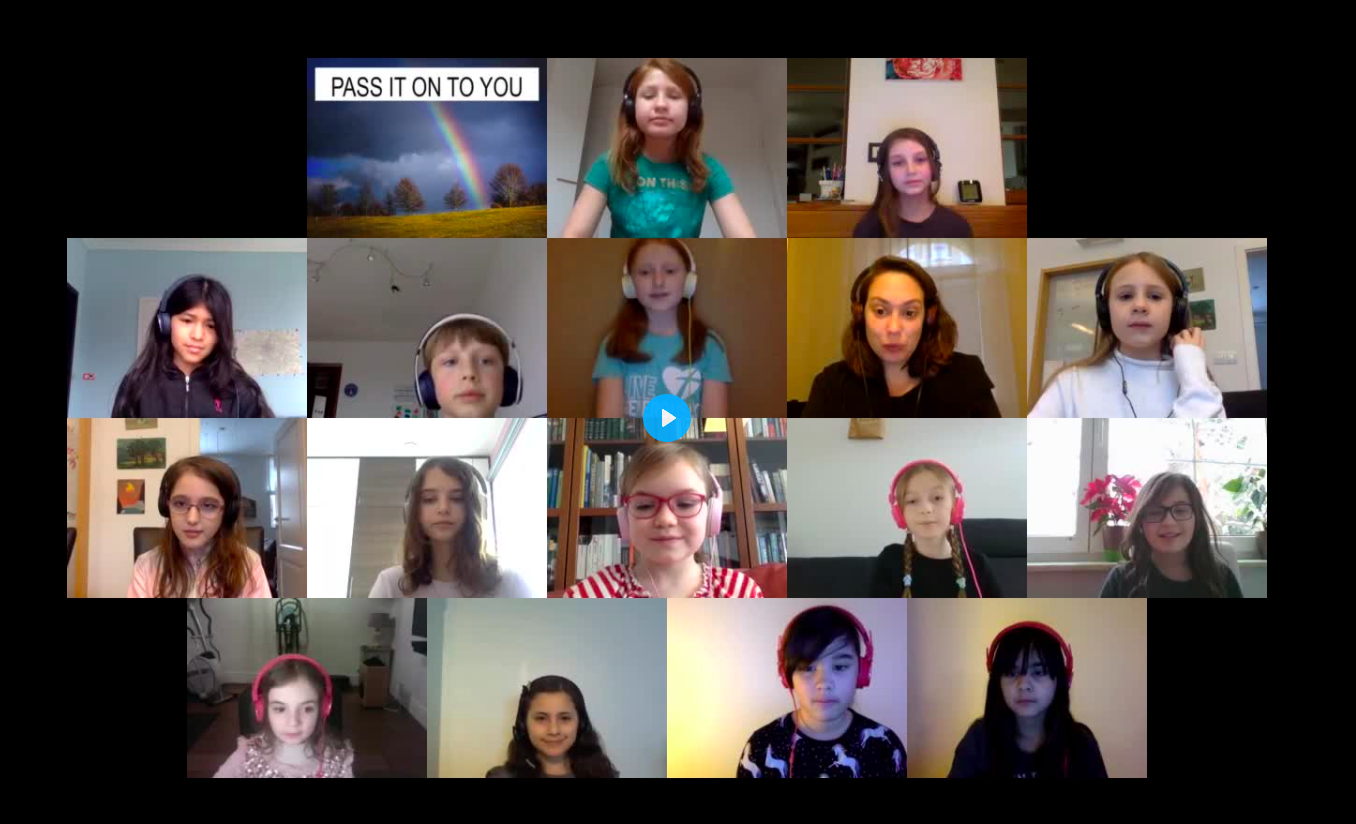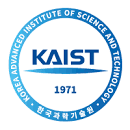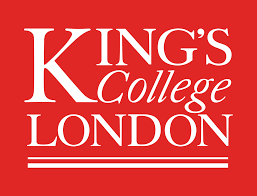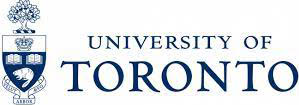

“I am just happy to be able to provide our students a chance to sing and feel connected again!”A highlight of learning and belonging this week was the ES Music Choir Performance of “Pass It On To You.” Please take a few minutes to listen to this heartwarming video.
“I found an amazing program that helps to make a virtual choir or band ensemble in minutes instead of hours and hours manually like it has in the past. While it may not be the most perfect sound quality, kids are able to record themselves and upload it. It is then super simple on my end with a click of a few buttons to realign and download a finished product in minutes!!!! That is a HUGE game changer!!!
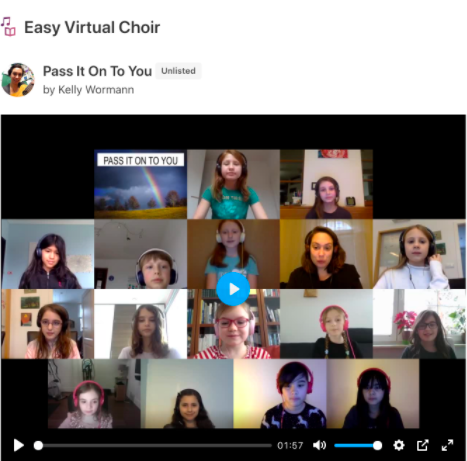
Performing regular live concerts and smaller “events” in a typical year, our music teachers have spent hours this year compiling individual recordings into “collective” performances to share more widely with our community. The recent find by Kelly means that now more time and energy can be spent on thinking and creating together rather than on technical behind the scenes work.
Necessity is the Mother of Invention
Authentic learning and creating has a real world audience and purpose. Our performance areas (music, theatre, sports) and “hands-on” courses (science, robotics, maths, making) have proven to be extra challenging during Distance Learning.
The extended obligation to learn remotely around the world has resulted in a significant number of innovations intended to support teaching and learning. Our teachers and learners continue to investigate and trial these new ideas about how to think, create, and share from a distance.
Added layers of complexity
Great teaching and learning has always meant constantly managing complexity, figuring out what technique or tool might best support the intended learning objective with a given group of students. Distance Learning has added significant layers of complexity to this.
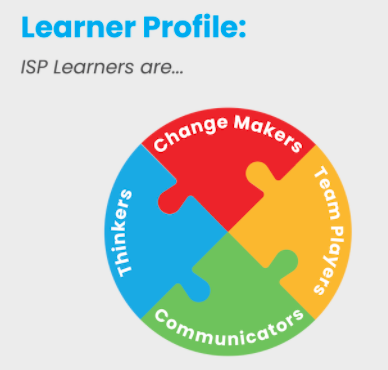
In addition to appreciating technological advances and our teachers continually finding new ways to facilitate online learning, it is important to understand how these tools and techniques are supporting learning.
ISP’s learners are Thinkers, Team Players, Communicators and Change Makers. The first of those competencies, thinking, during Distance Learning, a key challenge is how to make learners’ thinking visible. Visible Thinking: Learning is a result of thinking. When learners speak, write, or draw their ideas, they deepen what they understand. Harvard’s Project Zero’s Visible Thinking research shares the importance of educators surfacing students’ thinking, as well as proven techniques to do so.
“Fostering thinking requires making thinking visible. Thinking happens mostly in our heads, invisible to others and even to ourselves. Effective thinkers make their thinking visible, meaning they externalize their thoughts through speaking, writing, drawing, or some other method. They can then direct and improve those thoughts. Visible Thinking also emphasizes documenting thinking for later reflection.”
-David Perkins and Ron Ritchart, Making Thinking Visible
ISP teachers regularly make learning visible in their physical classrooms and hallways with whiteboards, anchor charts, posting work, etc. The challenge in the Distance Learning context is finding as many ways as possible to make learners’ thinking visible to both the other students as well as to the teacher. Padlet, a versatile, multi-layered software with various embedded tools , has become a favorite for educators around the world, as well as many here at ISP, to do just that. As our teachers have shared,
- Padlet can be used instead of bulletin boards around a physical classroom;
- Students or groups share their ideas and can see everyone else’s.
- It gives me a quick overview whether students understand new concepts, their engagement, etc.
A second way many teachers are making thinking visible is through virtual whiteboards (e.g. Whiteboard.it, Smartboard, Jamboard; Google Slides, etc)
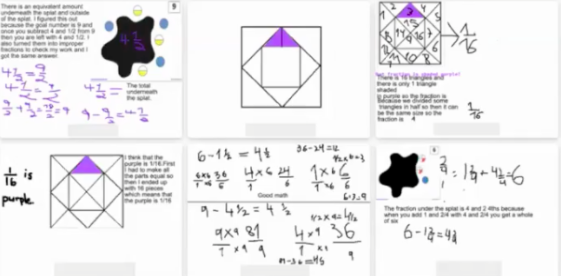
- CK, Grade 6 math teacher just shared her use of Whiteboard.fi to MS colleagues in the region. As she shared with these math educators, “immediately I can see what they’re thinking, what they’re struggling with, quickly giving feedback in real time, and students can make connections with others’ thinking.”
- Dave Rops, US math teacher, shares, “I have multiple copies of the same slide; they are all editors. I put kids in breakout rooms to work on their slide, if they get stuck they can look at their peers results. I also “watch” and scroll through, offering comments based on what they are doing.
Thinking Classrooms
For the past several years, we have been working with Garfield Gini-Newman, professor at Ontario Institute for Studies in Education and author of Creating Thinking Classrooms, to develop our effectiveness in nurturing thinkers across our school. In developing critical and creative thinking, teachers provoke and prod thinking before, during and after the lessons.
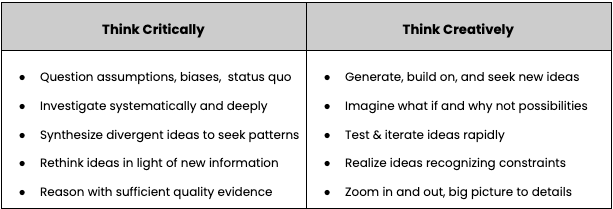
Screencasting and interactive video clips have been two key strategies to facilitate thinking during Distance Learning.
- The advantage of screen casting is that teachers can prepare videos with demonstrations, visuals, slides and information that can be listened to again later, as needed, giving more time and opportunities to think about and process the ideas.
- Interactive video clips: Embedding provocations throughout existing video content creates opportunities for questions and comments that can help learners think and share thinking about key points along the way. As Upper School teachers shared, “edpuzzle makes it more engaging for students and helps me focus only on the content that is relevant to the lesson and it allows to check students’ comprehension. “
We celebrate and thank students, teachers and parents for their ongoing open-mindedness as we investigate, trial and leverage innovations to best meet the challenges and complexity of Distance Learning.
